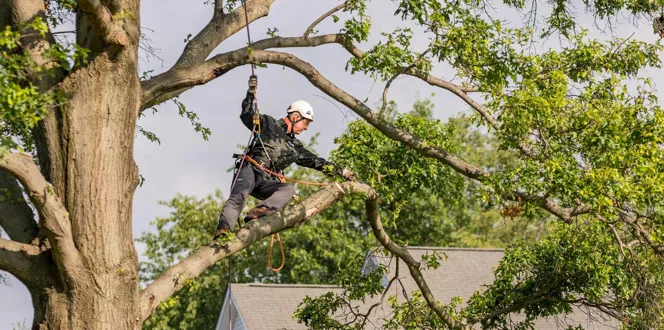There’s no better feeling than planting a new shrub in your home landscape.
There is the excitement you get knowing that it’s going to add color and texture and become a fun addition to your space. Not to mention that plants also boost your home aesthetics, add oxygen to your outdoor area, and even increase your home value.
Naturally, you want to plant them properly and take care of them so they get a great start in your landscape and provide lasting, positive impacts.
To accomplish this, there are steps you must take to ensure your new plants are cared for properly. Newly planted shrubs require some additional maintenance and attention to ensure they grow healthy roots.
Let’s discuss new shrub care and how to help them grow properly so you can give your new shrub the best start possible.
Types Of Shrubs
When choosing shrubs for your home landscape, you want to consider the various options to determine which one would best fit your space. This can help you determine proper shrub maintenance strategies for your plant type.
Deciduous shrubs drop their leaves and go dormant during the winter months. So if you have a desire to plant a privacy hedge, deciduous shrubs will leave your patio or home more exposed during these dormant times of the year, so they may not be the best choice for that use.
Evergreen shrubs, on the other hand, don’t drop their leaves during winter. They shed old leaves throughout the year without losing all of their leaves at once. You can find evergreen shrubs that have needles or ones with broad leaves.
If you’re seeking color during a part of the growing season, a flowering deciduous shrub might be a good choice for you.
How To Care For Newly Planted Shrubs
Once you plant your shrub, mulching is a great new shrub care step.
Mulch helps your soil retain moisture, moderates soil temperatures, and keeps weeds at bay. Spread 1 to 3 inches of mulch around your shrub after planting, but don’t pile any mulch around the base of your shrub.
Caring for newly planted shrubs also involves proper watering, precise pruning, and correct fertilization practices. Watering will be dependent upon soil and plant type, it may be a good idea to consult your local extension office for proper watering practices for new plants in your area.
Pruning Shrubs
Different shrub species require trimming at different times of the year. as part of shrub maintenance.
For instance, the ideal time to trim spring flowering shrubs is after they’ve finished blooming in spring, this makes it possible to enjoy their flowers. This also allows them time to set new flower buds for the next spring.
The ideal time to prune other shrubs is in late winter just before spring and prior to new growth beginning.
Depending on the region of the country you live in annual pruning may be all your shrubs need to keep them in shape and avoid unnecessary stress. Your goal is to remove dead, damaged, or diseased branches that can reduce aesthetics.
Watering Newly Planted Shrubs
Watering amount and frequency is completely dependent on the time of year the shrubs are installed, the soil type (i.e. sand or clay)as well as plant species.
Sandy soils store less water, therefore require more frequent watering. For the first two weeks, water daily and enough to soak the rootball area underneath the plant crown. For the next 3-12 weeks, water every three days. After the 12-week period and ensuring roots are established, cut watering back to once per week The guideline you can follow is to water approximately 1 gallon for every square foot of area under the shrub. This is also dependent on weather patterns. For clay soils water immediately after installation, then slowly soak the root area weekly, applying water slowly as needed. The best time of day to water newly planted shrubs is in the early morning to ensure the absorption of water and avoid evaporation.
Can you overwater newly planted shrubs? If you check the soil moisture around your shrub weekly, it should feel moist or damp to the touch. This means your newly planted shrub is receiving adequate water. If water is ponding around the root area then reduce watering amounts. If the soil begins to dry out, water the plant thoroughly.
During drought periods, water shrubs are enough to penetrate approximately 12 inches of soil depth.
Should I Fertilize Newly Planted Shrubs?
When fertilizing newly planted shrubs, schedule applications to coincide with active root growth and adequate soil moisture.
While there are ideal times to fertilize shrubs, using a slow-release fertilizer can provide nutrients throughout the year when plants need them most. This is especially important for newly planted shrubs. Always consult a certified arborist to get proper guidance on shrub fertilization and shrub maintenance.
First New Growth On Newly Planted Shrub
How you plant and care for new shrubs determines their success.
If your new shrub doesn't begin to grow within six weeks after planting, review your care methods.
Shrubs usually become established in one to two years. In fact, you can consider a newly planted shrub established when its root spread equals the spread of the above-ground canopy.







